Uncover Bordeaux's vibrant flavors and culinary gems with our expert guides. Plan an unforgettable trip now!
Read more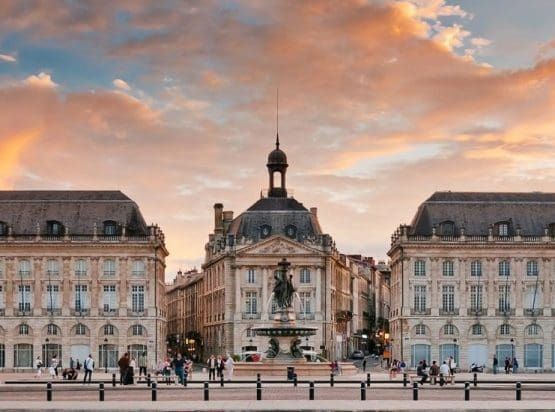
EXPLORE ALL OUR BORDEAUX WINE REGIONS GUIDE
Last updated: April 4, 2025
When the Wine Brokers of Bordeaux compiled the 1855 classification, none of Saint-Julien’s chateaux were bestowed the rank of First Growth. Yet no other region in Bordeaux has so high a proportion of classed growths as St-Julien, a curious paradox that continues to elicit debate and disagreement. Nevertheless, few would deny that the exceptional reds of this appellation are among the most consistent and reasonably priced in the Medoc.
Critics typically describe the regional style as offering a transition point between Margaux and Pauillac, and there is some truth in this description. Situated north of the commune of Margaux, St-Julien is perhaps all things to all people, a heady combination of the striking power of Pauillac and Margaux’s refined and exquisite perfume. With comparatively few exceptions, its decorated chateaux make excellent wine year after year, even in challenging vintages. This is perhaps the safest purchase of all the exalted vineyards of Bordeaux. Rarely does St-Julien, from Talbot’s affordable wines to the majestic heights of Leoville Las Cases, ever let you down.
Discover More About French Wine
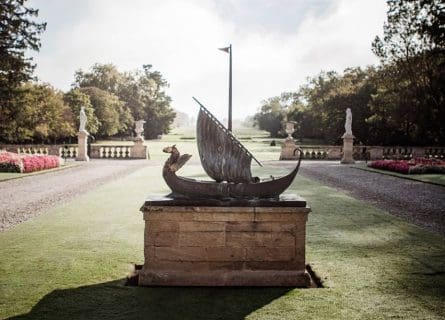
As so often, the Romans were the first to cultivate vineyards in Bordeaux, conquering Aquitaine in the last century BC. Historical evidence suggests they planted vines in the Right Bank, Blaye, and Loupiac in Entre-Deux-Mers. Yet the Medoc Peninsula existed as a water-logged marshland during this time – Saint-Julien did not rise to prominence until the 1600s.
Nevertheless, extensive trade links brought great prosperity to Bordeaux’s vineyards in the middle period of the Western Roman Empire. Yet anarchy reigned after Rome’s control over its territories collapsed in AD 476. This led to the abandonment of Bordeaux’s nascent wine industry, which did not reassert itself until the Middle Ages.
English Influence
The catalyst for its revival was partly the marriage between Henry II of England and Eleanor of Aquitaine. This significant political union resulted in the ports of Bordeaux and Libourne being under English control, with trading privileges granted to the vignerons of Graves (south of Bordeaux city), providing them with a significant advantage in northern European markets.
In the 14th century, vineyards continued to expand in Graves, Blaye, Bourg, and the Right Bank. Indeed, Bordeaux’s most renowned region in the late medieval period was located on the outskirts of Bordeaux, while the Medoc was a low-lying piece of undesirable swamp land.
However, there were limited attempts to grow vines during this era, although Saint-Julien and its neighbors only rose to prominence in the 17th century. Dutch engineers drained the peninsula in the 1600s, laying the foundations for the world’s most prestigious and iconic fine wine region.
Saint-Julien’s 18th Century Heyday
By the 18th century, Saint-Julien’s heyday had arrived. New vineyards were planted rapidly, and the nouveau riche constructed extravagant chateaux as symbols of their wealth. Meanwhile, the exceptional gravel soils of the region were producing delicious red (and white) wines enjoyed across Europe. This caught the attention of several wealthy Parisian families, most famously the Rothschilds, who invested in the Medoc in the mid-1800s.
Yet one of Saint-Julien’s most famous winemaking dynasties is the Bartons, arriving in Bordeaux after leaving Ireland in the 18th century. Thomas Barton was the first man to set foot in the Medoc, although his ancestor Hugh Barton purchased Langoa Barton and neighboring Leoville Barton in 1821 and 1826, respectively. Both properties remain family-owned and run by the late Anthony Barton’s daughter, Lilian. They continue to produce quintessential Saint-Julien: perfumed, structured, and exquisite red wines that can age for decades.
Yet prices in the appellation have remained stable—avarice does not define Saint-Julien. On the contrary, owners wish to safeguard against rampant price speculation, which regrettably tarnishes Bordeaux’s reputation with its traditional clientele. Today, Saint-Julien produces wines to be savored with exquisite food instead of being traded like Bitcoin on the secondary market.
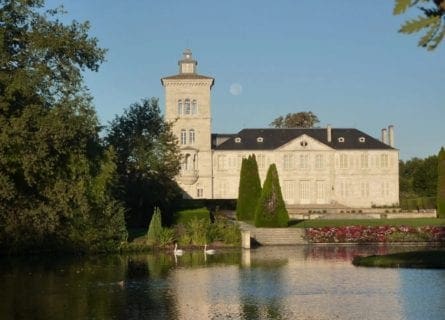
Saint-Julien is one of the smallest appellations in Bordeaux, sandwiched between Margaux (to the south) and Pauillac to the north. Almost every acre of land is planted to vines, yielding red wines of impeccable finesse – and drinkability – that recall Pauillac’s muscularity and Margaux’s fine perfume.
And, like its neighbor Pauillac, Saint-Julien’s terroir is highly regarded. The soil is essentially deep gravel on two extensive plateaux, a potent blend of varying proportions of quartz pebbles, sand, flint, and clay. The terroir also benefits from excellent drainage – which is invaluable in wet vintages. Yet the true secret of St-Julien’s ability to cope with inclement weather is the jalles (small streams), which function as drainage channels.
Weather Conditions
Although the Atlantic heavily influences the region’s climate, proximity to the Gironde helps to offset the risk of frost in cold springs; Saint-Julien’s vineyards often escape the hailstorms that can inflict such devastating damage in the Medoc. This is also a relatively precocious region, and the grapes usually ripen earlier than they do in Cussac to the south or in Moulis to the west. The classic Saint-
Signature Wine Characteristics
Julien trademark is ripe (seldom jammy) fruit, firm tannins, and great freshness. It is very rare to encounter a poor and/or unbalanced wine made by the Cru Classe estates, although the rain-soaked 2013 vintage really tested the limits of terroir and winemaking in the zone. However, like all Bordeaux regions, stylistic variations flow from differences in soil, microclimate, and oenology.
Variety Among Cru Classe Estates
The grand chateaux divide into two groups: the riverside estates epitomized by the Leoville estates around the village of St-Julien itself, and the southern group centered on the village of Beychevelle, led by noble properties Chateau Beychevelle, Branaire-Ducru, and Ducru-Beaucaillou, and reaching back inland with Chateaux Gruaud Larose and Lagrange.
Over the past forty years, a surge of investment has transformed Saint-Julien, equipping chateaux with the latest winemaking equipment, tasting laboratories, and ornate barrel cellars known as chai.
Yet despite this rapid pace of technological advancement, the essentials of Saint-Julien winemaking remain unaltered. Indeed, the ‘recipe’ of blending Cabernet Sauvignon with Merlot and Cabernet Franc was laid down in the early 20th century. This paradigm is still widely followed today, albeit climate change is impacting alcohol levels (especially in the Merlot) and raising questions about the future of the classic assemblage.
Climate Change
Matthieu Bordes, directeur général at Chateau Lagrange says:
“We have thought for a long time how to combat global warming via new methods of canopy management; we decided in 2022 to deleaf only one side of the vine row. In addition, on some plots to preserve water resources, we decided to destroy the vegetal covering we usually have all year long,” he also commented. “We are extremely confident about the quality of the Cabernet Sauvignon being made in the appellation today. But I’ve been worried about our Merlot for over 15 years, which is why I’ve been systematically replacing it with Cabernet.”
Chateau Talbot and Lagrange also make a small volume of Bordeaux Blanc, which is typically a blend of Sauvignon Blanc, Semillon, and Muscadelle.
Yet mono-varietal styles are noticeable by their absence in Saint-Julien, despite concerns that overripe Merlot can sully the wine. Many estates are committed to the art of blending, using Cabernet Franc and occasionally Petit Verdot to add aromatics, structure, and finesse to their reds.
Winemaking Approach
Chateau Langoa Barton typifies the Saint-Julien approach to winemaking, which tends to eschew heavy extraction and lavish seasoning in barrique. Here, the grapes are crushed before the must is vinified in temperature-controlled wooden vats. It is then aged in approximately 50% new oak for no less than 18 months. The results in bottle are memorable: bright, elegant reds that showcase aromas of cedar, forest floor, tobacco, and truffle—everything you’d expect from a first-class Bordeaux estate.
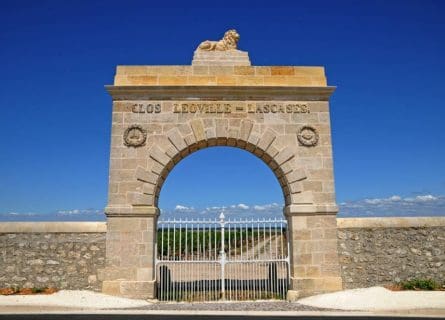
What exactly is it about Saint-Julien that consumers find so irresistible? Perhaps it is because a typical wine offers connoisseurs a delectable hybrid – the best features of Margaux and Pauillac rolled into one. It may not (generally) have Chateau Margaux’s finesse, nor does it demonstrate the power and muscularity of Latour. It borrows from both: forthright in its fruit expression, St-Julien is a harmonious marriage between ripeness and tannin, opulence and finesse. The same cannot be said for the poorer wines of the Haut-Medoc and Blaye/Bourg.
And yet, the merchants of Bordeaux did not see fit to award any chateau First Growth status back in 1855. But was this a fair decision or a gross oversight? There is no easy answer to that question, although many critics regard one property as a leading candidate for reclassification. That estate is called Leoville-Las-Cases.
Leoville-Las-Cases
The Delons family has been running the winery since 1900. The Marquis de Las-Cases, its previous owner, faced financial difficulties and was compelled to sell to a consortium that included the Delons. The family increased their shares over the years until they became the majority owner in Las Cases.
Today, this large property is divided into 125 distinct climats (vineyard sites), producing wines that can rival the grandeur of Latour and the luxury of Mouton Rothschild. Indeed, Leoville-Las-Cases is undoubtedly the richest and most impressive of the Saint-Julien wines.
Leading critic Neal Martin is just one professional to wax lyrical about the recent 2022 vintage. He said:
“Precocious, almost decadent blackberry and blueberry fruit on the nose, there is something lavish and audacious about this Saint-Julien. There is an underlying estuarine element, a whiff off the banks of the Gironde. The palate is medium-bodied with polished tannins, very detailed, extremely pure, and what you might call a “vertical” Las-Cases with fabulous precision on the finish. This surpasses the 2018-2020 trio, and to use that clichéd expression is a ‘tour de force'”
First-Growth Quality
It seems evident that Martin, and his contemporaries, regard Leoville-Las-Cases as First-Growth quality. When benchmarked against Lafite and Latour, this venerable claret can hold its own; its record-setting prices (by Saint-Julien standards) certainly raise the highest expectations of collectors and buyers alike. Granted, it’s challenging to remain objective with the hype machine running at full speed, endorsed by many influential critics and journalists.
Yet most tastings of Leoville-Las-Cases occur under blind conditions (the label is not seen), where its superlative quality shines through. If Leoville-Las-Cases were to follow in the footsteps of Mouton Rothschild and ascend to the greatest heights of the 1855 hierarchy, a historic fallacy would be overturned.
The sauvignon blanc grape varietal, originally from the Bordeaux region of France, is now one of the world's most loved white varieties.
Find out moreExplore the allure of the Semillon grape & its legendary connection to Sauternes. Unveil the history & flavors of this captivating varietal. Cheers!
Find out moreMuscadelle is a white grape varietal, primarily used for blending in the production of sweet white wines in the Bordeaux region.
Find out moreDiscover the irresistible allure of Cabernet Sauvignon—a worldwide favorite with robust, dark-bodied flavor. Unleash your wine journey today!
Find out moreMerlot is the most cultivated grape in Bordeaux and closely related to Cabernet Franc
Find out moreCabernet Franc grape is a close relative of Merlot and Cabernet Sauvignon and is the principal blending grape used in Bordeaux.
Find out morePetit Verdot is a full-bodied red wine grape varietal used in classic Bordeaux blends and originates in southwestern France
Find out moreLet’s face facts: Saint-Julien is no Paris regarding gastronomy and culinary titillation. Fortunately, the excellent restaurants of nearby Pauillac or Bordeaux’s downtown are not far away. In Aquitaine’s elegant capital, you’ll have a multitude of choices as numerous bistros, brasseries, and restaurants serve local delicacies in a lively atmosphere. Atlantic seafood – including some of Europe’s best oysters – and Entrecote à la Bordelaise should whet your appetite.
Bordeaux Gastronomy Guide: Read more

Uncover Bordeaux's vibrant flavors and culinary gems with our expert guides. Plan an unforgettable trip now!
Read more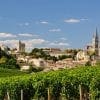
Uncover Saint Emilion's vibrant flavors and culinary gems with our expert guides. Plan an unforgettable trip now!
Read more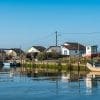
Uncover Arcachon vibrant flavors and culinary gems with our expert guides. Plan an unforgettable trip now!
Read more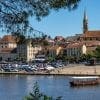
Uncover Bergerac's vibrant flavors and culinary gems with our expert guides. Plan an unforgettable trip now!
Read more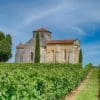
Uncover Cognac's vibrant flavors and culinary gems with our expert guides. Plan an unforgettable trip now!
Read more
Uncover Périgueux's vibrant flavors and culinary gems with our expert guides. Plan an unforgettable trip now!
Read more
Uncover Saintes's vibrant flavors and culinary gems with our expert guides. Plan an unforgettable trip now!
Read moreIf you would like us to customize an exclusive luxury tour, contact us and let us know your travel plans. We offer luxury food and wine tours for private groups of a mininium two guests. In addition, all of our private, chauffeured tours are available year-round upon request.

